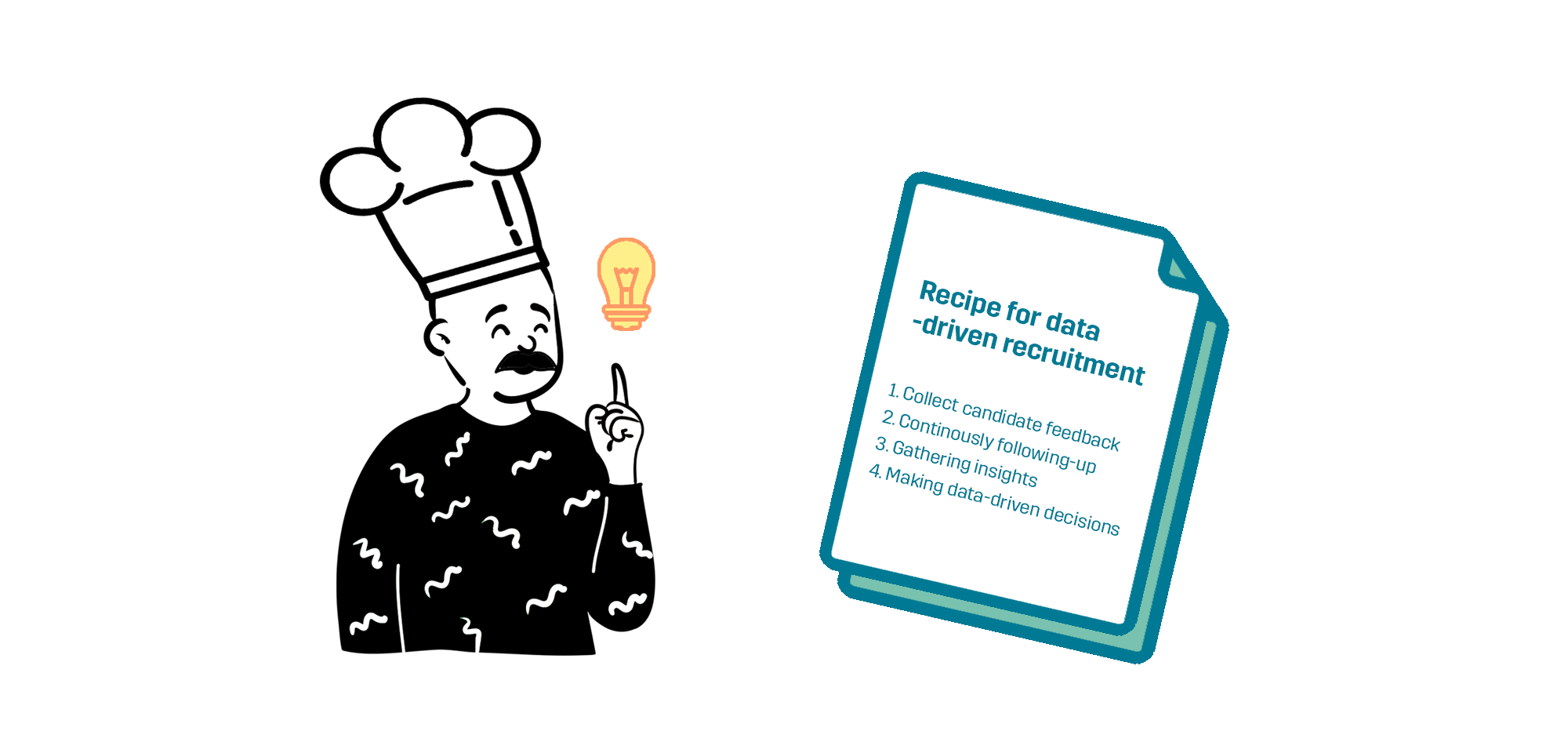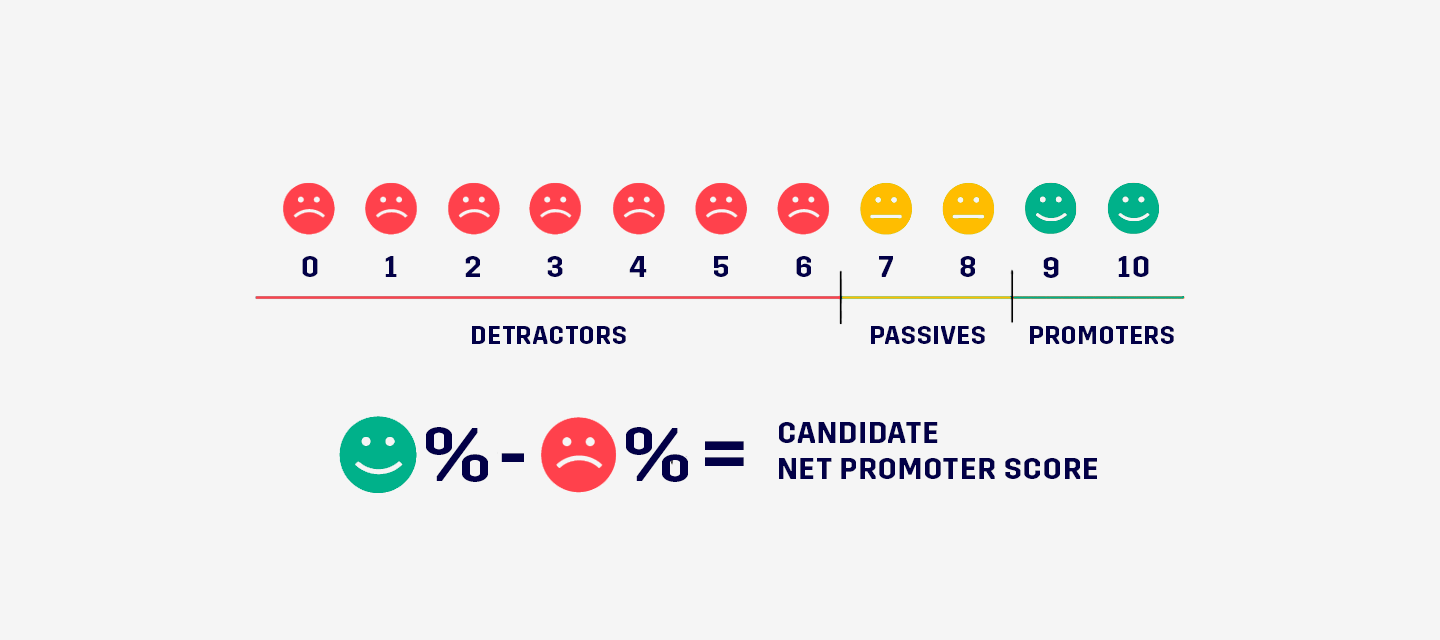
Rosie Greaves
The Recipe for Successful Data-Driven Recruitment Decisions
Are you ready to start making data-driven decisions to fuel your recruitment efforts? It's easier than you might think.
Today’s recruiters increasingly use data to help them make better and faster decisions as their recruitment process unfolds. Utilizing tangible statistics to influence your hiring choices can simultaneously increase efficiency, reduce costs, and improve your candidate experience.
Here at Trustcruit, our recipe for improving recruitment-related decision-making has four essential ingredients:
- Collecting candidate feedback
- Continuously following-up
- Gathering insights
- Making data-driven decisions
So is this four-step approach beneficial to your organization?
Let’s take a look.
1. Collect Candidate Feedback
If you’re not already, start collecting real-time data about your candidate’s interactions with your company—I.e., their experiences with your organization and their perception of your employer brand.
It’s important to collect feedback at all times. Don’t limit yourself to sending an annual survey. Candidate feedback will change over time and fluctuates from candidate to candidate. So, ask every applicant – even the ones who you know will badly review your process.
You can measure candidate data with a key metric called the Candidate Net Promoter Score (CNPS). This examines how likely an applicant is to recommend your organization to a friend or colleague.

We also recommend asking candidates a few questions about their recruitment experience with you. Then you can use their feedback to make improvements accordingly.
For example, Uppsala Municipality, a Swedish public sector organization, used such data to clarify and simplify their application forms and improve their interview process.
Candidates were asked about their thoughts about Uppsala’s recruitment process. The score was way below the benchmark scale of 0-10.
However, by gathering detailed candidate feedback, Uppsala could identify the problems with their application forms, and remedy the issue.
2. Continuous Follow-Ups

Your data collection activity shouldn’t stop at the first hurdle. Instead, it’s important to continuously follow up with candidates and eventual hires about their experience with you. Not only does this demonstrate you care about their journey, but you can also gather more details to fuel your Candidate Net Promoter Score (CNPS). Then you can analyze the results to improve each aspect of your decision-making process.
In the case of the Uppsala Municipality, it consistently asked candidates for locum tenens (temporary substitute positions) over 90 days about their experience of the interviewing process.
By doing this, Uppsala Municipality was able to improve its satisfaction scores by 35% and improve their interview techniques. Hence, they’re now a benchmark that other public sector organizations aspire to.
3. Gather Insights
By gathering real-time candidate experience feedback from the start to the end of your recruitment process, it’s possible to get an insight into the everyday problems facing your organization. You’ll also get a more accurate feel for how candidates perceive your organization.
With this info to hand, your HR team is better positioned to make quick decisions based on data – rather than on their subjective opinions.
There’s no limit to what you can gather data on:
- Your advertising
- Job descriptions
- Application forms
- Your quality of communication with candidates
- Whether applicants would recommend you to a colleague or friend.
These are just a few of many examples – but you get the idea!
Once the recruitment process is over, you’ll then have a wealth of feedback to dig into, revealing what this batch of candidates really thought about your organization. From these insights, you should understand whether they’re likely to apply to work for you again (that’s if you reject the candidate).
Not just this, but you can also see how your candidate performance measures against other companies or internally between different recruiters, cities, and departments too.
These insights make it much simpler for you to share information that’s fact-based with hiring managers or anyone else involved in your organization’s recruitment process. Data in this context isn’t a weapon. Instead, it’s a fantastic tool for underpinning convincing arguments for much-needed change in your recruitment strategy.
4. Make Data-Driven Decisions
Gathering data at every stage of the recruitment process enables you to:
- Proactively report any glitches in your recruitment drives
- Identify how you to fix those glitches
- Make decisions that you can act upon
Then once you’ve made those improvements, you now have a benchmark for how successful they were.
As we’ve already said, when Uppsala Municipality began questioning its candidates about their experiences, it scored below the benchmark regarding the candidate’s overarching impression of the recruitment process. Fast forward 11 months later and, because Uppsala made data-driven decisions to improve their operations, they now score 8.28 on a scale of 0-10 on the Candidate Net Promoter score.
Ready to Make Data-Driven Recruitment Decisions?
If having read this you think you’re ready to start making data-driven recruitment decisions, then it’s time to talk to Trustcruit. We can help you automatically collect data and use it to your advantage. Book your free demo today and see for yourself!
If you have any questions, don’t be shy, let’s get the conversation started!
Get notified on new blog updates
+ get our popular candidate experience ebook for free
[activecampaign form=15 css=0]